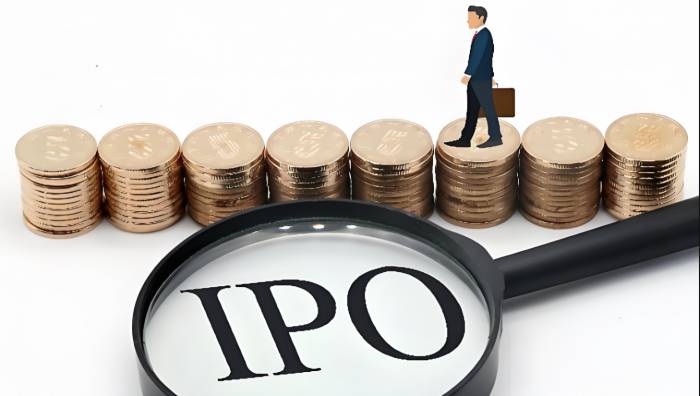On September 28th, photovoltaic company Gaojing Solar terminated its IPO. Just recently, Tongwei also proactively terminated a private placement matter of 16 billion. An invisible hand is regulating the overall situation, which is undoubtedly beneficial for the photovoltaic industry. With the tightening of financing and the improvement of supply, the photovoltaic industry is expected to return to rationality.
Since 2022, the photovoltaic industry has been expanding disorderly and growing wildly, involving many companies that are "freeloading". According to incomplete statistics, this year there are more than 20 listed companies in the A-share market that have crossed into the photovoltaic industry, with investments of tens of billions of funds.
For example, Huadong Heavy Machinery, with a market value of less than 5 billion and cash of less than 500 million, is actually planning to invest 8 billion in photovoltaics.
Take Mu Bang High-tech as another example, also a small company with a market value of 6 billion, and they are proposing a private placement of 1.3 billion.
The Gaojing Solar mentioned at the beginning of the article is also a microcosm of the photovoltaic industry in recent years. Established for only 4 years, it was able to apply for an IPO, taking advantage of the photovoltaic trend, with a valuation of over 20 billion before the planned listing, raising 5 billion in the IPO, and then after the listing, is there going to be another large-scale private placement?
Advertisement
Fortunately, it has come to an abrupt halt now. However, to be honest, is raising 5 billion too bold?
As the third dragon in the photovoltaic silicon wafer industry, Gaojing Solar's revenue from 2020 to 2022 was 89,000, 2.49 billion, and 17.57 billion, respectively, with net profits attributable to the parent company of -1.136 million, 110 million, and 1.82 billion, respectively, showing a very terrifying growth rate.
However, this is closely related to huge subsidies. During the reporting period, government subsidies related to assets exceeded 1.9 billion, and government subsidies related to income reached 68.44 million.In 2022, the company's top five customers were Tongwei, Aikosolar, Runyang, Junda, and Zhongrun Photoelectric, contributing to a revenue share as high as 76.49%.
Not only is there an issue of over-concentration of suppliers, but there is also a significant hidden danger. In 2021, Trina Solar was still a major customer of Gaojing, but in 2022, it disappeared from the top 5 customers, likely because Trina started manufacturing its own silicon wafers in 2022, thus excluding Gaojing.
Now, the largest customer is Tongwei, contributing nearly 4 billion in revenue, accounting for 23% of the total revenue. In August of this year, Tongwei announced a 20 billion expansion plan aimed at integrated layout, which involves 32GW of silicon wafers. So, will Tongwei, which is planning to enter the silicon wafer market, also abandon Gaojing in the future?
Giants are all seeking integration, and whether a single silicon wafer manufacturer like Gaojing can withstand the risks is another question.
Moreover, the era of excessive profits from silicon wafers has already passed.
The industry's discourse power is firmly in the hands of Zhonghuan and Longi, who have previously initiated price wars and are unwilling to let prices rise too high. In the future, whoever has the cost advantage will be the one to thrive.
So, does Gaojing have the strength?
In 2021 and 2022, the company's main business gross margin was 9.79% and 14.65%, respectively, while Longi's silicon wafer gross margin was 27.55% and 17.62%, and Zhonghuan's silicon wafer gross margin was 22.73% and 18.95%, indicating a certain gap between Gaojing and the industry leaders.
However, their investment in research and development is a world apart, which determines that it is difficult to surpass in terms of technological iteration. In 2021 and 2022, Gaojing's R&D expenses were 31.43 million and 106 million, respectively, accounting for only 1.26% and 0.60% of the revenue, which seems a bit too frugal. In the same period, Zhonghuan's R&D expenses were 1.86 billion and 2.92 billion.Additionally, out of the 5 billion raised by Gao Jing through its IPO, only 2 billion was allocated to research and development. A significant amount of funds were used to replenish liquidity and expand production internally.

Currently, the valuations of Zhonghuan and Longi have dropped to just 10 times PE, which are far less impressive than Gao Jing's, even if it goes public. Moreover, there was initially some inflation in the valuation.
Now that Gao Jing's IPO has been terminated, it serves as a signal of tightening financing. In the future, there will be a more cautious approach towards substantial fundraising, which is beneficial for both investors and the photovoltaic industry.

Post a comment